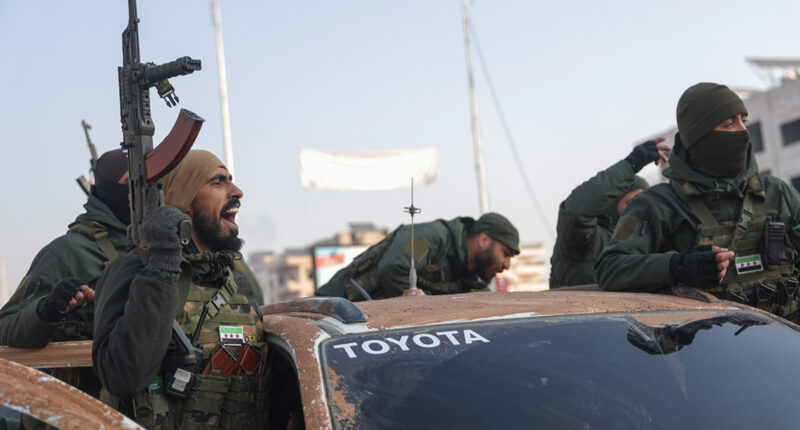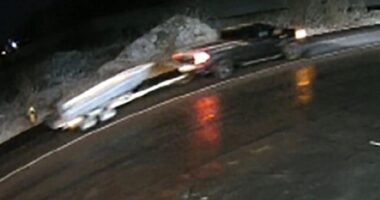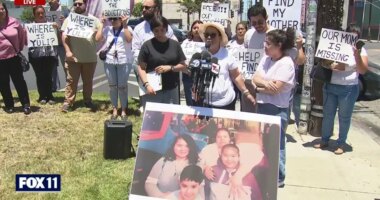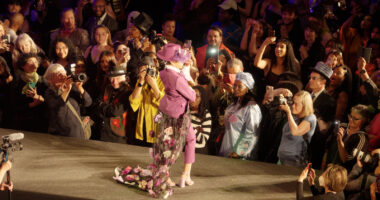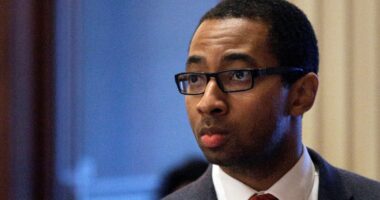BEIRUT — Syrian insurgents have reached the suburbs of Damascus as part of a rapidly moving offensive that has seen them take over some of Syria’s largest cities across the country, opposition activists and a rebel commander said Saturday.
It was the first time that opposition forces reached the outskirts of the Syrian capital since 2018 when Syrian troops recaptured the region adjacent to the capital following a yearslong siege. It came after the Syrian army withdrew from much of southern Syria on Saturday, leaving more areas of the country, including two provincial capitals, under the control of opposition fighters.
The rapid advances by insurgents are a stunning reversal of fortunes for Syria’s President Bashar Assad, who appears to be largely on his own, with erstwhile allies preoccupied with other conflicts.
His chief international backer, Russia, is busy with its war in Ukraine, and Lebanon’s powerful Hezbollah, which at one point sent thousands of fighters to shore up his forces, has been weakened by a yearlong conflict with Israel. Iran, meanwhile, has seen its proxies across the region degraded by Israeli regular airstrikes.
The U.N.’s special envoy for Syria, Geir Pedersen, called for urgent talks in Geneva to ensure an “orderly political transition” in Syria. Speaking to reporters at the annual Doha Forum in Qatar, he said the situation in Syria was changing by the minute.
Amid the dramatic developments, Syria’s state media denied rumors flooding social media that Assad has left the country, saying he is performing his duties in the capital, Damascus.
Rami Abdurrahman, who heads the Britain-based Syrian Observatory for Human Rights, an opposition war monitor, said insurgents are now active in the Damascus suburbs of Maadamiyah, Jaramana and Daraya. He added that opposition fighters on Saturday were also marching from eastern Syria toward the Damascus suburb of Harasta.
A commander with the insurgents, Hassan Abdul-Ghani, posted on the Telegram messaging app that opposition forces have started carrying out the “final stage” of their offensive by encircling Damascus. He added that insurgents were headed from southern Syria toward Damascus.
Syria’s military, meanwhile, sent large numbers of reinforcements to defend the key central city of Homs, Syria’s third largest, as insurgents approached its outskirts.
The rapid advances by insurgents are a stunning reversal of fortunes for Syria’s President Bashar Assad, who appears to be largely on his own, with erstwhile allies preoccupied with other conflicts.
His chief international backer, Russia, is busy with its war in Ukraine, and Lebanon’s powerful Hezbollah, which at one point sent thousands of fighters to shore up his forces, has been weakened by a yearlong conflict with Israel. Iran, meanwhile, has seen its proxies across the region degraded by Israeli regular airstrikes.
Rami Abdurrahman, who heads the Syrian Observatory for Human Rights, a Syria war monitor, reported Saturday that Iran’s military advisers have started leaving Syria. He added that Iran-backed fighters in eastern Syria, mainly from Afghanistan and Pakistan, have withdrawn into central Syria.
The shock offensive began Nov. 27 led by the jihadi Hayat Tahrir al-Sham group, or HTS, during which gunmen captured the northern city of Aleppo, Syria’s largest, and the central city of Hama, the country’s fourth largest city. The group has its origins in al-Qaida and is considered a terrorist organization by the U.S. and the United Nations.
HTS leader Abu Mohammed al-Golani told CNN in an exclusive interview Thursday from Syria that the offensive aims to overthrow Assad’s government.
The Britain-based Observatory said Syrian troops have withdrawn from much of the two southern provinces and are sending reinforcements to Homs, where a battle is looming. If the insurgents capture Homs, they would cut the link between Damascus, Assad’s seat of power, and the coastal region where the president enjoys wide support.
The Syrian army said in a statement Saturday that it has carried out redeployment and repositioning in Sweida and Daraa after its checkpoints came under attack by “terrorists.” The army said it is setting up a “strong and coherent defensive and security belt in the area,” apparently to defend Damascus from the south.
Since Syria’s conflict broke out in March 2011, the Syrian government has been referring to opposition gunmen as terrorists.
In the gas-rich nation of Qatar, the foreign ministers of Iran, Russia and Turkey were scheduled to meet to discuss the situation in Syria. Turkey is a main backer of the rebels seeking to overthrow Assad.
Qatar’s top diplomat, Sheikh Mohammed bin Abdulrahman Al Thani, criticized Assad for failing to take advantage of the lull in fighting in recent years to address the country’s underlying problems. “Assad didn’t seize this opportunity to start engaging and restoring his relationship with his people,” he said.
Sheikh Mohammed said he was surprised by how quickly the rebels have advanced and said there is a real threat to Syria’s “territorial integrity.” He said the war could “damage and destroy what is left if there is no sense of urgency” to start a political process.
After the fall of the cities of Daraa and Sweida early Saturday, Syrian government forces remain in control of five provincial capitals – Damascus, Homs and Quneitra, as well as Latakia and Tartus on the Mediterranean cost.
Tartus is home to the only Russian naval base outside the former Soviet Union while Latakia is home to a major Russian air base.
On Friday, U.S.-backed fighters of the Kurdish-led Syrian Democratic Forces captured wide parts of the eastern province of Deir el-Zour that borders Iraq as well as the provincial capital that carries the same name. The capture of areas in Deir el-Zour is a blow to Iran’s influence in the region as the area is the gateway to the corridor linking the Mediterranean to Iran, a supply line for Iran-backed fighters, including Lebanon’s Hezbollah.
With the capture of a main border crossing with Iraq by the SDF and after opposition fighters took control of the Naseeb border crossing to Jordan in southern Syria, the Syrian government’s only gateway to the outside world is the Masnaa border crossing with Lebanon.
____
Associated Press writers Albert Aji in Damascus, Syria and Qassim Abdul-Zahra in Baghdad contributed to this report
Copyright © 2024 by The Associated Press. All Rights Reserved.
